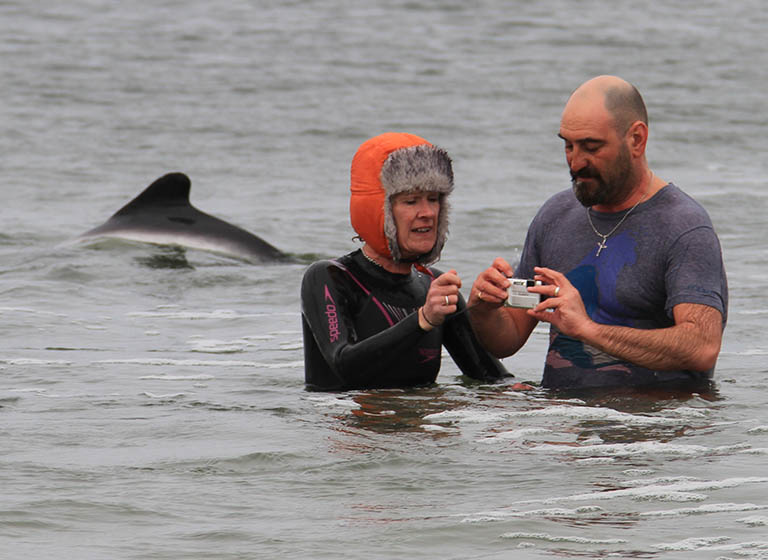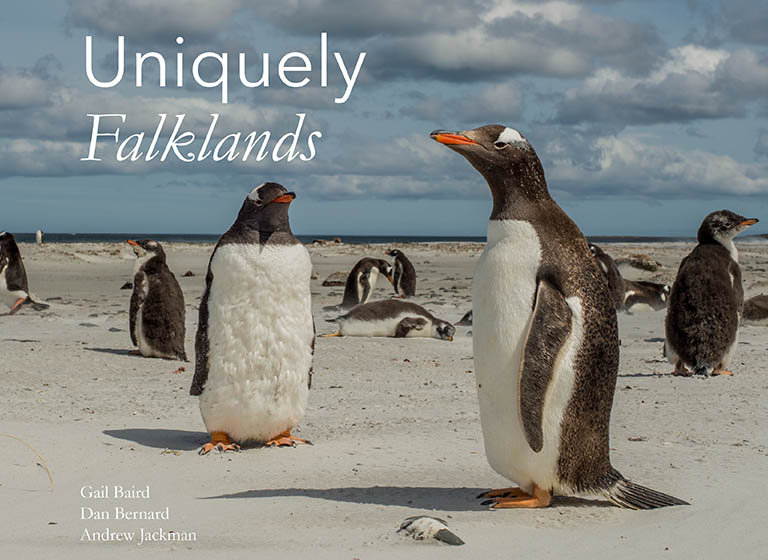
Projects

-
Uniquely Falklands
-
Commerson's (Cephalorhynchus commersonii) and Peale's Dolphins (Lagenorhynchus australis) are found in the cold waters of the South Atlantic and can often to be seen together in mixed groups. The pod of Commerson's in this photograph was spotted at Bertha’s Beach on the Falkland Islands leaping and diving in the surf. Although freezing, it seemed, at the time, imperative to get close and join them. The more splashing and noise we made in the water, the more they wanted to play.
Shot for our title, Uniquely Falklands.
-


-
Book Cover
-
Written by Gail Baird with photography by Dan Bernard, Gail Baird & Andy Jackman; casebound with dust jacket; 160 full colour pages. This book celebrates the beauty, isolation and uniqueness of the Falkland Islands through their vast landscapes, uninhibited wildlife and warm and generous people.
The English naturalist and geologist, Charles Darwin visited the Falkland Islands in the 1830s to collect information on geology, flora and fauna: his research would later influence and inform his work on evolutionary theory. Sealers and whalers established successful industries there in the late eighteenth, and nineteenth centuries, but few people back in the UK had heard of this British Overseas Territory, made up of over 750 tiny islands far away in the South Atlantic Ocean, before April 2, 1982, when Argentina invaded . . . the rest of that story, they say, is history.
-


-
Ascension
-
Ascension became strategically important to the British when, in 1815, after imprisoning Napoleon I on Saint Helena close by, they garrisoned the island as a precaution. Ascension is also a British Overseas Territory and lies 1,000 miles off the western coast of Africa, roughly midway between the horn of South America and Africa. The craggy hills that surround the volcanic peaks of this outpost are strangely eerie and must be a determining factor as to why there is no indigenous or permanent population.
-


-
Gentoo Penguins
-
Gentoos in the Falkland Islands (Pygoscelis papua)
In the late 19th century, it was estimated that eight penguins were required to produce one gallon of oil. Given that 50,700 gallons of penguin oil were reported to have been made by only four shipping vessels in 1867, means that almost half a million penguins were slaughtered in just one season, by just four vessels.
The figures above illustrate the widespread destruction of these birds that went on in the last two centuries. Not only were penguins sought after for their feathers and oil, but their eggs were also harvested in bulk, and it was not until 1999 that the collection of Rockhopper penguins’ eggs was made illegal.
It was not only penguins that were boiled for their oil; the slaughter of seals and sea lions, whales and dolphins were also part of well-documented thriving industries. Thankfully, these practices have now been stopped and activities are concentrated on preserving penguin populations and creating a safe environment for them to flourish.
Five species of penguin are found here but the colonies of Gentoo represent the largest population in the world. Contrary to expectation, penguins on the Falklands live, and come to breed, on the long, tropical-looking sandy beaches, sheep paddocks and dry heath land – there is not an iceberg in sight.
-



